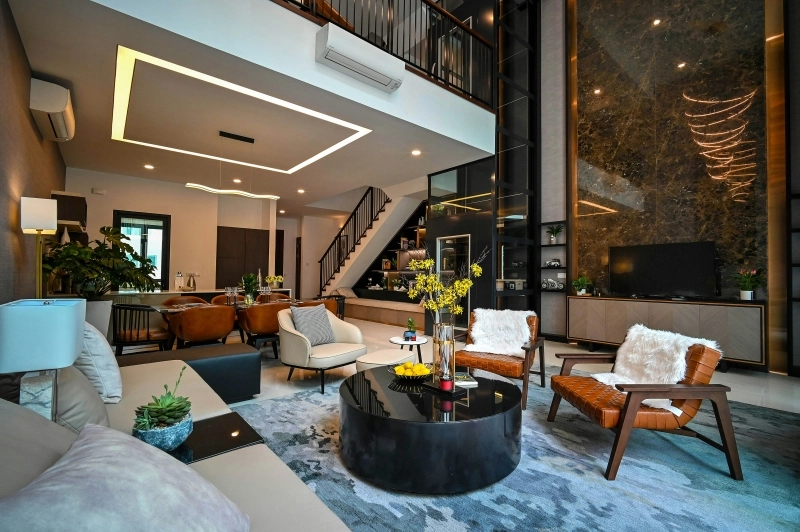-
How to Successfully Redesign Your Hotel Interior for a Modern Appeal – Image Credit Unsplash
A hotel’s interior design plays a significant role in shaping potential guests’ first impressions and overall satisfaction. A well-thought-out redesign can set your hotel apart, making it more inviting, functional, and visually appealing. Whether you’re aiming to attract business travelers, vacationers, or a mix of both, updating your interior with a modern touch can enhance comfort, reflect current trends, and boost bookings. In this article, we explore seven strategies to successfully redesign your hotel interior for a modern appeal.
Define your vision and objectives
Before embarking on a hotel interior redesign, it is critical to establish your goals. Determine what you want to achieve with the renovation. Are you looking to improve functionality, create a unique brand, or enhance comfort? Take the time to understand your target audience. Business travelers, luxury seekers, and families have different expectations, so your redesign must align with your target guest’s needs and preferences.
If you are unsure how to match your redesign to your target customers, partner with specialists like I-5 Design Build to guide you through the process. Specialists can help refine your vision, ensuring that every design element, from color schemes to furniture selection, reflects your brand identity and appeals to your ideal guests.
Invest in contemporary design trends
A modern hotel interior should reflect the latest design trends while maintaining a timeless appeal. Below are a few current trends you could consider:
-
Minimalism and functionality: This trend focuses on clean lines, uncluttered spaces, and purposeful design. Neutral color palettes, multifunctional furniture, and sleek aesthetics can help you create a sophisticated yet practical environment that enhances guest comfort.
-
Sustainable design: Eco-friendly materials, energy-efficient lighting, and locally sourced furnishings contribute to a greener hospitality experience.
-
Biophilic elements: Incorporating natural elements like indoor plants, green walls, natural lighting, and organic textures can foster a connection to nature. This design approach enhances relaxation and well-being, creating a refreshing and inviting atmosphere.
-
Smart technology: From keyless entry and automated lighting to voice-controlled room settings, technology-driven design enhances convenience and personalization. Smart integrations can improve efficiency, elevate the guest experience, and reflect modern travelers’ expectations.
-
Bold accents and unique features: Vibrant colors, statement artwork, and unique furniture pieces add personality and character to a hotel’s interior. This trend embraces individuality, allowing your hotel to stand out while creating memorable and immersive guest experiences.
Plan the layout
A well-thought-out layout enhances your hotel’s interior functionality and aesthetics. Consider how guests move through spaces and ensure a seamless flow from the entrance to reception, lounge, rooms, and dining areas. Open spaces with strategic zoning can help create an inviting and spacious feel. You could also invest in multi-purpose furniture and modular designs to optimize space while adding flexibility.
Choose a cohesive color scheme and lighting
Color and lighting play a crucial role in setting the mood. A modern interior often features neutral tones like beige, gray, and white, complemented by bold accent colors. Opt for earthy tones and pastel hues to create a warm and welcoming atmosphere.
Be sure to layer lighting to enhance different areas. Consider using:
-
Ambient lighting for overall illumination in well-lit spaces
-
Task lighting for workspaces, reading nooks, and vanities
-
Accent lighting to highlight architectural features and artwork
-
Smart lighting systems that adjust brightness and color temperature based on time of day
Upgrade furniture and fixtures
Investing in high-quality, stylish furniture is essential for a modern appeal. Go for ergonomic designs that prioritize comfort while complementing the overall aesthetic. You should also consider material durability, especially in high-traffic areas. Be sure to invest in statement pieces such as designer chairs, elegant coffee tables, and contemporary art installations to add a touch of sophistication.
Prioritize sustainability
With most people prioritizing eco-friendliness today, incorporating sustainable practices into your hotel’s interior design is no longer an option. It is a necessity. Guests are increasingly drawn to environmentally responsible hotels. Consider using eco-friendly materials such as reclaimed wood, bamboo, and recycled fabrics. You could also invest in energy-efficient systems, water-saving fixtures, and waste-reduction programs to become environmentally responsible while appealing to eco-conscious guests.
Work with professional designers and contractors
Partner with experienced interior designers, architects, and contractors to bring your vision to life. Professionals can help balance aesthetics, functionality, and cost-effectiveness while ensuring compliance with safety regulations.
When choosing designers and contractors for your hotel redesign, prioritize experience in hospitality design. This ensures they understand functionality, durability, and guest expectations. Review their portfolio to see if their style aligns with your vision, and check their reputation through client reviews.
Endnote
You must be strategic when redesigning your hotel interior for a modern appeal to blend aesthetics, functionality, and guest comfort. Be sure to define your goals, incorporate contemporary trends, optimize space, upgrade furniture, and partner with professional designers and contractors to create a welcoming environment that enhances guest experience and sets your hotel apart in the competitive hospitality industry.















